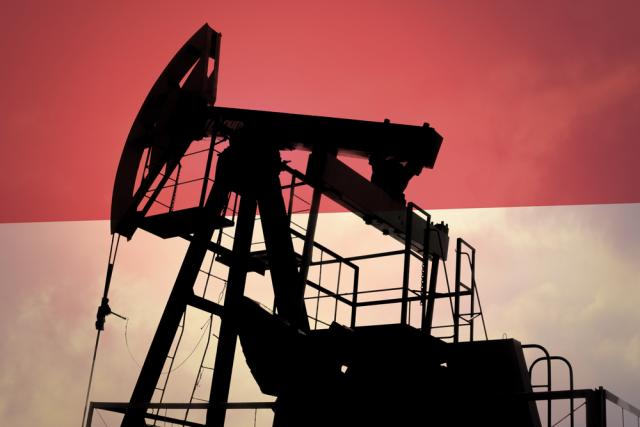
Pertamina aims to boost oil and gas production levels at the Mahakam Block in East Kalimantan, Indonesia. (Source: Shutterstock.com)
Indonesia’s state-run PT Pertamina has lined up a 257-well drilling campaign for the aging onshore Mahakam Block in East Kalimantan for 2020-2022.
The company’s upstream director Darmawan H. Samsu said the company would drill the wells and build associated production units in Mahakam concession as part of a field development optimization program.
“We hope that with this program we’ll be able to stop the rate of decline in production and maintain it at an optimal level,” Darmawan told the Minister of Energy and Mineral Resources (ESDM) Arifin Tasrif at a meeting held recently.
The program includes constructing a booster compressor at a platform in the Peciko Field and a gas pipeline from the Jempang Metulang platform in the South Mahakam Field to a nearby collection point.
The project, which will be implemented by PT Pertamina Hulu Mahakam (PHM), is estimated to cost about US$1.5 billion. The goal is to boost oil and gas production levels at Mahakam to about 50,000 barrels of oil per day (bbl/d) and 1,400 million standard cubic feet per day (MMscf/d) by 2022, up from the current level of about 36,400 bbl/d and 650 MMscf/d.
The onshore concession with five gas fields (Tambora, Tunu, Peciko, Sisi Nubi and South Mahakam) and two oil fields (Bekapai and Handil) had pumped 52,000 bbl/d and 1,360 MMscf/d of gas before Pertamina took over operatorship from French major Total on Jan. 1, 2018.
About 30% of the more than 2,000 total drilled wells in the concession are 20 years old, according to regulator SKK Migas.
PHM general manager John Anis said the program would cover drilling wells of various types based on function, architecture, completion type, lifting mechanism and wellhead-tree technology to increase production levels from aging oil and gas fields in the Mahakam concession, which is known to be a complex geophysical zone for hydrocarbons.
The geophysical structure of oil and gas reservoirs in Mahakam is considered unique, with flow lines spread across the river delta zone. The reservoirs are not inter-connected, and they are shaped like thousands of small pockets spread across a swamp and sea area of more than 3,000 sq km (1,558.3 sq miles), with depths of up to 5,000 m (16,404 ft).
Anis said engineers at PHM continued to develop safe techniques and methods to produce gas in shallow zones that were previously considered dangerous to produce.
PHM plans to apply the HP/HT drilling method at the Tunu Field in 2020. The company is expected to face reservoir pressures greater than 13,000 pounds per square inch absolute and gas temperatures above 160 C, he added.
PHM is also looking to launch a chemical injection-based EOR project for Mahakam fields. Various studies have been launched to identify suitable technologies. Anis said a pilot project for a chemical-based would be launched at the Handil Field, the largest oil field in the block, in 2020.
The operator has drilled 121 wells in the Mahakam block so far this year, exceeding the initial target of 118 wells. Measures such as water flooding and pressure maintenance have been applied to minimize declining production. These efforts have resulted in higher production at Handil, where production increased to 17,000 bbl/d from an average of 15,000-16,000 bbl/d.
Since becoming operator PHM has struggled to maintain production levels at the aging fields at Mahakam, where the first hydrocarbon discovery was made in 1972.
Total and its partner Inpex Corp. adopted different methods to tackle challenges on a field-by-field basis. At the Tunu Field, production was revived by lowering network pressure, lighter well architecture and reducing well spacing to re-access disconnected reservoirs, according to the operator. Pressure maintenance and intensive drilling helped at the Handil and Bekapai fields.
Average gas production from the Mahakam fields was 1,286 MMscf/d before Total’s exit.
Despite having produced for more than four decades, the Mahakam concession could still produce a significant quantity of reserves, according to the operator. The concession is estimated to contain proven reserves of 4.9 trillion cubic feet (Tcf) of gas and 57 million barrels of oil.
SKK Migas Chief Dwi Soetjipto earlier said Mahakam’s potential gas reserves could reach 10 Tcf.
The regulator added that production from the concession could be quickly monetized, given the LNG plant in Bontang, “to provide income to the state and local governments through oil and gas revenue-sharing funds.”
Recommended Reading
NAPE: Turning Orphan Wells From a Hot Mess Into a Hot Opportunity
2024-02-09 - Certain orphaned wells across the U.S. could be plugged to earn carbon credits.
Chevron Hunts Upside for Oil Recovery, D&C Savings with Permian Pilots
2024-02-06 - New techniques and technologies being piloted by Chevron in the Permian Basin are improving drilling and completed cycle times. Executives at the California-based major hope to eventually improve overall resource recovery from its shale portfolio.
Comstock Continues Wildcatting, Drops Two Legacy Haynesville Rigs
2024-02-15 - The operator is dropping two of five rigs in its legacy East Texas and northwestern Louisiana play and continuing two north of Houston.
CEO: Continental Adds Midland Basin Acreage, Explores Woodford, Barnett
2024-04-11 - Continental Resources is adding leases in Midland and Ector counties, Texas, as the private E&P hunts for drilling locations to explore. Continental is also testing deeper Barnett and Woodford intervals across its Permian footprint, CEO Doug Lawler said in an exclusive interview.
E&P Highlights: Jan. 29, 2024
2024-01-29 - Here’s a roundup of the latest E&P headlines, including activity at the Ichthys Field offshore Australia and new contract awards.





